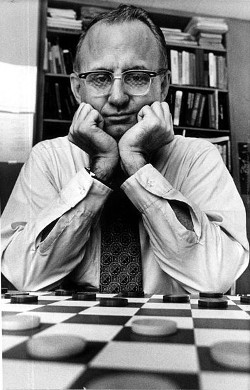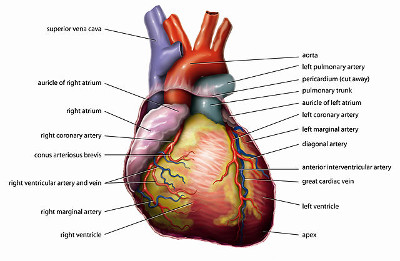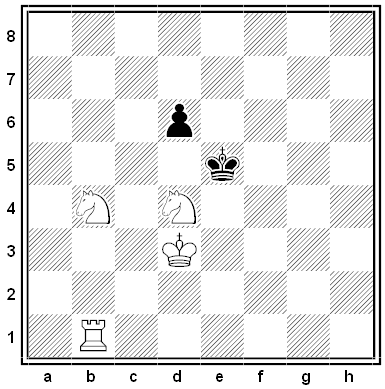“Honesty is the best policy: but he who acts on that principle is not an honest man.” — Archbishop Richard Whately
Author: Greg Ross
Red and Black

Take two decks of cards, minus the jokers, shuffle them together, and divide them into two piles of 52 cards. What is the probability that the number of red cards in the Pile A equals the number of black cards in Pile B? How many cards would you have to view to be certain of your answer?
Black and White
Music Appreciation

The first movement of Beethoven’s piano sonata no. 29, the Hammerklavier, bears a puzzlingly fast tempo marking, half-note=138. Most pianists play it considerably more slowly, judging that the indicated tempo would test the limits of the player’s technique and the listeners’ comprehension.
Well, most listeners. In Fred Hoyle’s 1957 science fiction novel The Black Cloud, an intelligent cloud of gas enters the solar system and establishes communication with the earth. It demonstrates a superhumanly subtle understanding of any information that’s transmitted to it. As scientists are uploading a sampling of Earth music, a lady remarks, “The first movement of the B Flat Sonata bears a metronome marking requiring a quite fantastic pace, far faster than any normal pianist can achieve, certainly faster than I can manage.”
The cloud considers the sonata and says, “Very interesting. Please repeat the first part at a speed increased by thirty percent.”
When this is done, it says, “Better. Very good. I intend to think this over.”
This
This is not very interesting
But if
You have read this far already
You will
Probably
Read as far as this:
And still
Not really accomplishing
Anything at all
You might
Even read on
Which brings you to
The line you are reading now
And after all that you are still
Probably dumb enough to keep
Right on making
A dope of yourself
By reading
As far down
The page as this.
— Anonymous, Princeton Tiger, 1949
In a Word
sesquialteral
adj. half again as large
improcerous
adj. not tall
Born in 1915, giant Henry M. Mullins partnered with Tommy Lowe and little Stanley Rosinski to form the vaudeville act Lowe, Hite and Stanley. Of Mullins, who stood 7’6-3/4″ and weighed 280 pounds, doctor Charles D. Humberd said, “It is indeed amazing to watch so vast a personage doing a whirlwind acrobatic act. … He dances, fast and furiously, and engages in a comedy knock-about ‘business’ that would be found strenuous by any trained ‘Physical culturist.’ … He is alert, intelligent, well read, affable and friendly.” The act continued until Rosinski’s death in 1962.
A Jump Ahead

Mathematician Marion Tinsley lost only seven games of checkers in a career that spanned 45 years. Between 1950 and 1995, he took first place in every tournament in which he played. “Dr. Tinsley has taken the game beyond what anybody else ever conceived,” International Checkers Hall of Fame founder Charles Walker told Sports Illustrated in 1992. “No one presumed to think they could beat him.”
His last and best opponent was a machine, Chinook, designed by University of Alberta computer scientist Jonathan Schaeffer. When the American Checkers Federation refused to let a machine play for the championship in 1990, the sporting Tinsley resigned his crown and immediately accepted the match.
He won 4-2, with 33 draws. In one game, after the program had played its 10th move, Tinsley said, “You’re going to regret that.” Chinook resigned 26 moves later, and in the ensuing analysis Schaeffer found that Tinsley had looked 64 moves ahead to find the only winning strategy. (When asked for the source of his advantage, Tinsley, a lay preacher, said, “I’ve got a better programmer — God.”)
But the machine kept improving, and Tinsley’s health began to fail. He had to withdraw after six draws in their 1994 rematch, and he died of pancreatic cancer shortly afterward at age 68.
Chinook has since solved the game — after 18 years of thinking, it produced a map that would show it a non-losing move in any situation. In principle, at least, the computer is now invincible — the best a human can hope for is a draw.
This might have disappointed Tinsley, who played not for supremacy but for a love of the game. “Checkers can get quite a hold on you,” he said. “Its beauty is just overwhelming — the mathematics, the elegance, the precision. It’s capable of wrapping you all up.”
Podcast Episode 39: Lateral Thinking Puzzles

Here are eight new lateral thinking puzzles that you can try on your friends and family over the holidays — see who can make sense of these odd scenarios using only yes-or-no questions.
Function Statements

When we say that the function of the heart is to pump the blood, what do we mean, exactly? Typically an object’s function is something that confers some good or contributes to some goal: In pumping blood my heart keeps me alive; in grasping objects my hands help me manipulate my environment.
But is that right? Suppose someone designs a sewing machine with a self-destruct button. Pressing the button will never have good consequences for anyone, and no one will ever set a goal that’s furthered by blowing up the machine. Still, it seems correct to say that the button’s function is to destroy the machine.
Another example, from Johns Hopkins philosopher Peter Achinstein: “Suppose that a magnificent chair was designed as a throne for the king, i.e., it was designed to seat the king. However, it is actually used by the king’s guards to block a doorway in the palace. Finally, suppose that although the guards attempt to block the doorway by means of that chair they are unsuccessful. The chair is so beautiful that it draws crowds to the palace to view it, and people walk through the doorway all around the chair to gaze at it. But its drawing such crowds does have the beneficial effect of inducing more financial contributions for the upkeep of the palace, although this was not something intended. What is the function of this chair?”
(Peter Achinstein, “Function Statements,” Philosophy of Science, September 1977.)
“A Man His Own Grandfather”
The following remarkable coincidence will be read with interest: Sometime since it was announced that a man at Titusville, Pennsylvania, committed suicide for the strange reason that he had discovered that he was his own grandfather. Leaving a dying statement explaining this singular circumstance, we will not attempt to unravel it, but give his own explanation of the mixed-up condition of his kinsfolk in his own words. He says, ‘I married a widow who had a grown-up daughter. My father visited our house very often, fell in love with my stepdaughter, and married her. So my father became my son-in law, and my step-daughter my mother, because she was my father’s wife. Some time afterwards, my wife gave birth to a son; he was my father’s brother-in-law, and my uncle, for he was the brother of my step-mother. My father’s wife — i.e. my step-daughter — had also a son; he was, of course, my brother, and in the mean time my grandchild, for he was the son of my daughter. My wife was my grandmother, because she was my mother’s mother. I was my wife’s husband and the grandchild at the same time. And as the husband of a person’s grandmother is his grandfather, I was my own grandfather.’ After this logical conclusion, we are not surprised that the unfortunate man should have taken refuge in oblivion. It was the most married family and the worst mixed that we ever heard of. To unravel such an entangling alliance could not have resulted otherwise than in an aberration of mind and subsequent suicide.
— Littell’s Living Age, May 9, 1868
(Yes, I know about the song!) (Thanks, Dave.)

